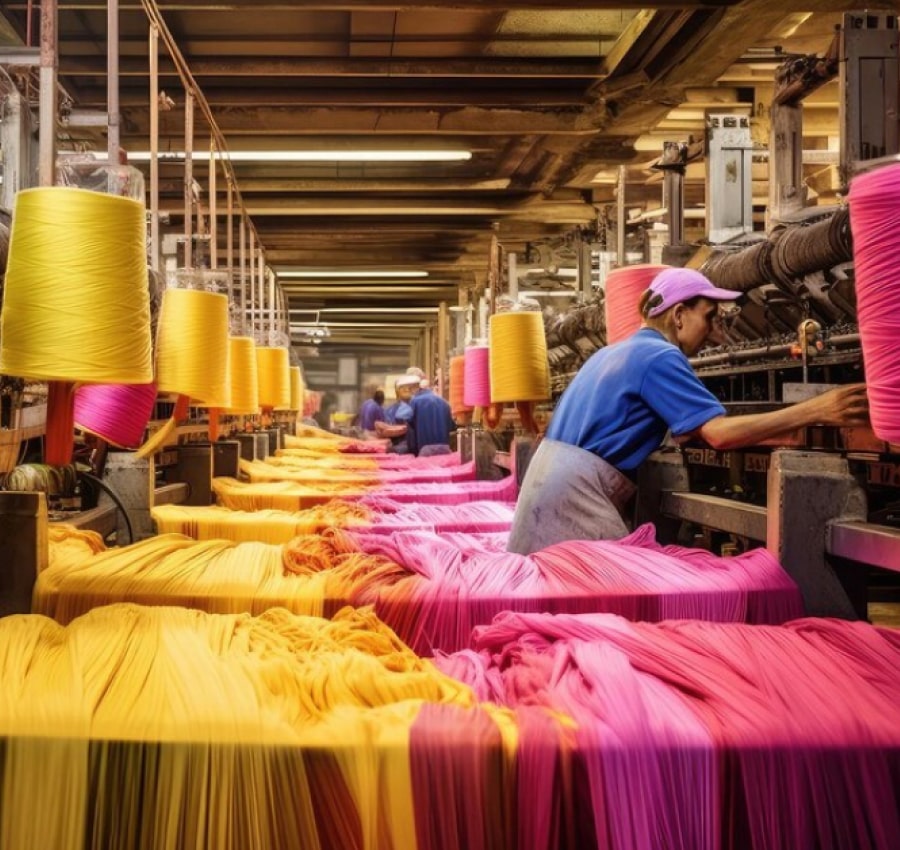From Fabric to Fashion:
Unveiling the Journey of Garment Manufacturing

Overview
Garment Manufacturing
workflow
process begins
- Product Study and Pattern Making
- Garment Sampling, Approval
- Fabric Development
- Fabrics and Trims Approval
- Fabric and Trims Procurement
- Pre-production Meeting

Pre-Production Phase
Pattern Making
In garment manufacturing, patterns are essential templates created from design sketches.
Garment Sampling
Garment factories secure buyer approval on tech-pack samples for refining construction and material needs before bulk fabric cutting, ensuring alignment on design, schedule, quality, and deadlines.
Fabric Development
Garment makers specify fabric requirements, negotiate prices, develop lab dips, and test fabric samples for quality before bulk ordering; yarn-dyed stripes require knit-down approval.
Bulk Fabric and
Trims Procurement
Fabric sourcing includes calculating consumption, ordering, inspecting for faults, sorting into batches for shade consistency, and procuring trims based on garment consumption with quality checks for defect-free production.
Production Planning
and Scheduling
Production planning ensures timely order fulfillment through meticulous scheduling, oversight, and adjustment of production activities, guided by a time and action calendar managed by merchandisers.
Production Phase
Fabric Cutting
Fabric utilization in garment manufacturing is optimized through careful cutting room processes, including spreading, layering based on marker size, machine or hand cutting, size marking for sorting, and quality checks before dispatching to sewing.
Printing and Embroidery
Printing and embroidery, optional in garment manufacturing, involve methods like screen printing and heat transfer, applied during fabric production or post-cutting; small-scale setups may outsource or use in-house printers for tasks like logo printing.
Stitching
Garment stitching entails preparation, marking, folding, and precise assembly using various sewing machines, with industrial engineers planning efficient production setups for each garment style.
Washing
Garment washing, optional for sweaters and denim, uses industrial machines for cleaning and finishes; dry cleaning is essential for high-fashion items, and denim undergoes a specific dry process before finishing.
Post-Production Phase
Finishing
Garment finishing encompasses thread trimming, sticker removal, initial defect checking, ironing for smoothness, quality assurance, and final inspection for measurements and labeling details, with repairs as needed.
Folding and Packing
Garment folding involves precise dimension folding or hanger packing with tag attachment, followed by packing in polybags or cartons for retail, showroom transport, and internal quality audits before shipment preparation as scheduled.
Production Reporting
In garment manufacturing, daily production, inventory, attendance, and expense reports are crucial, complemented by periodic KPIs and real-time production tracking; the finishing team compiles packing lists for invoicing and shipping, while post-shipment departments handle order completion, fabric reconciliation, trim reports, and quality analysis.


